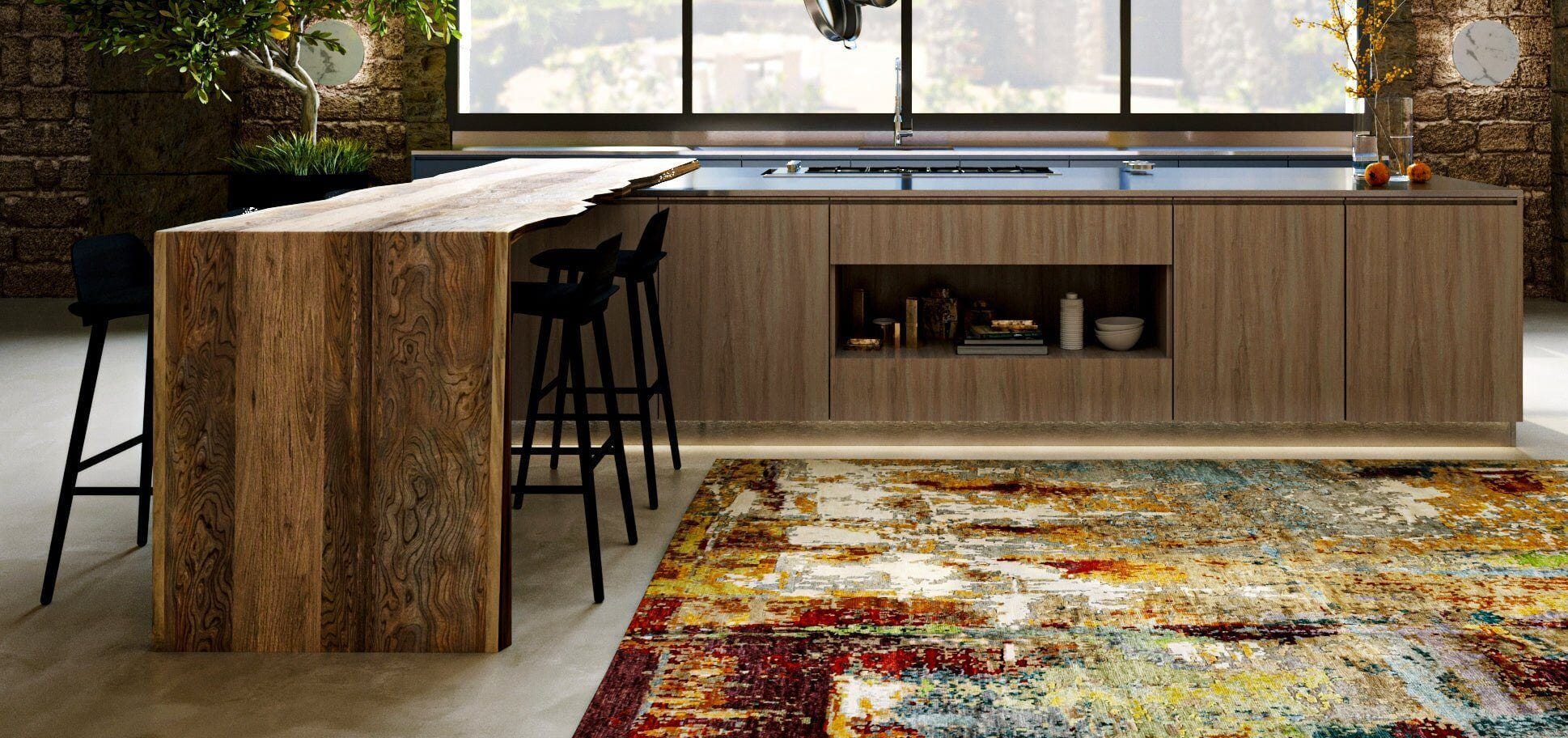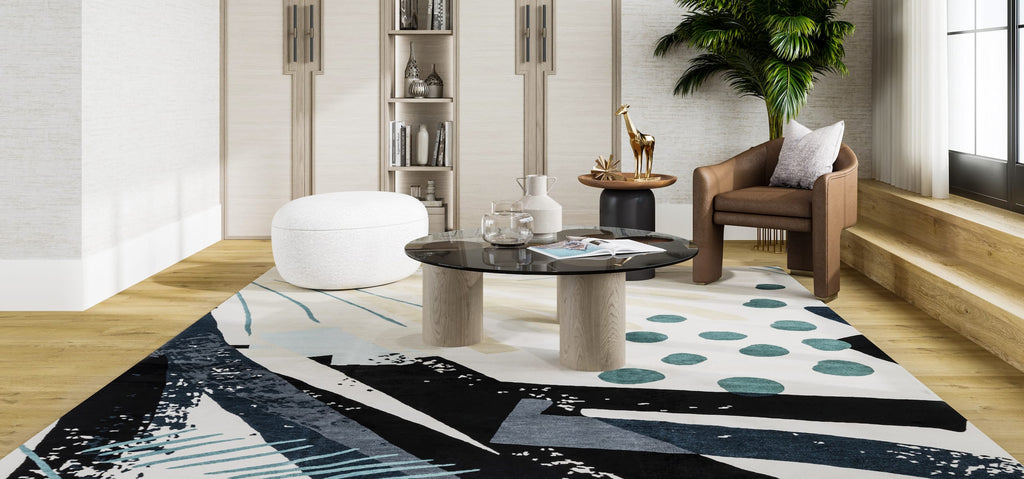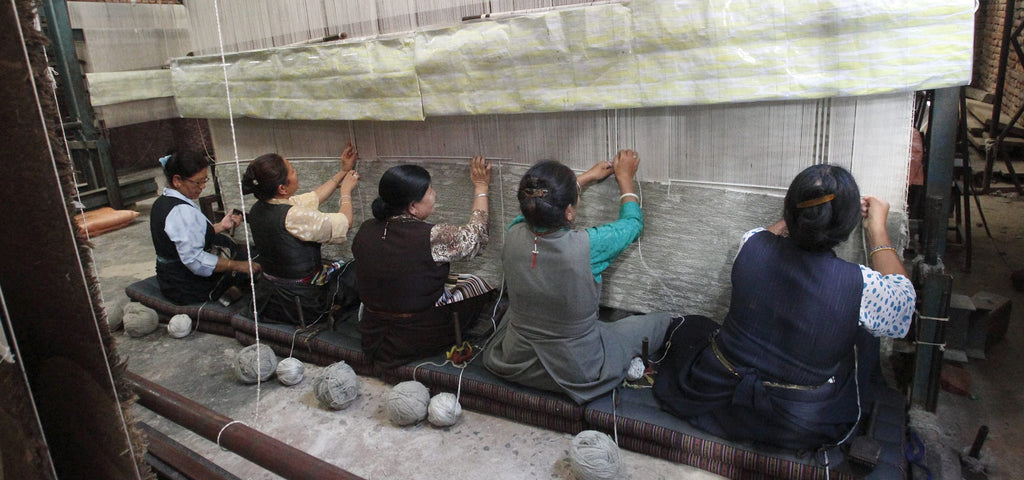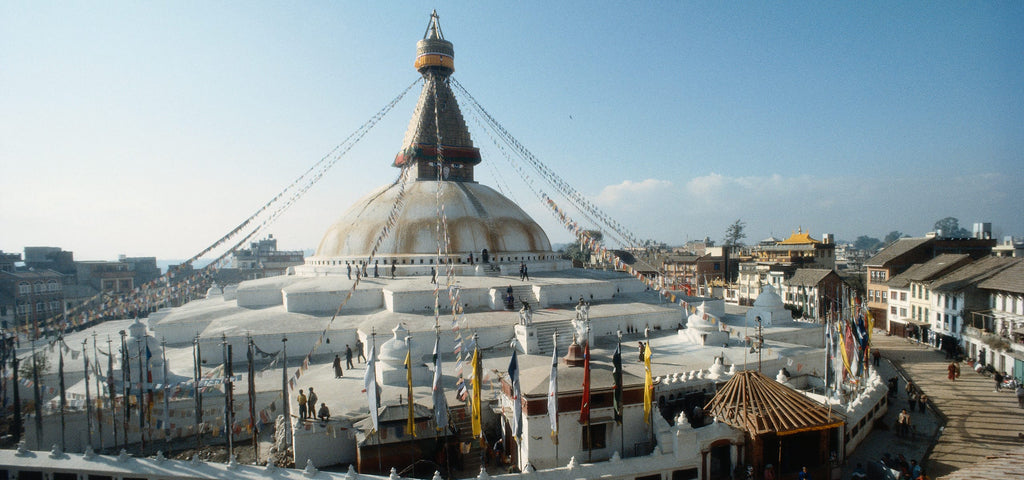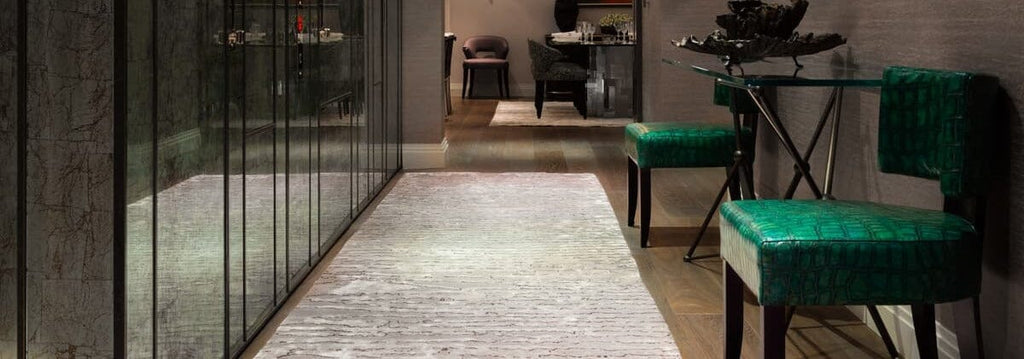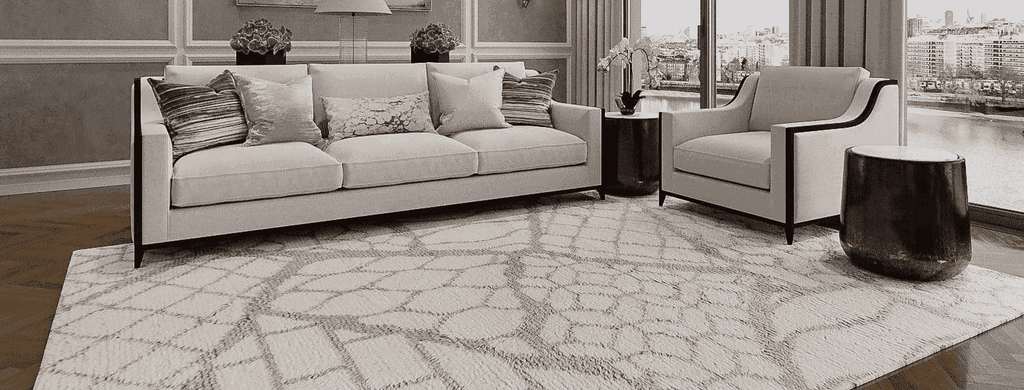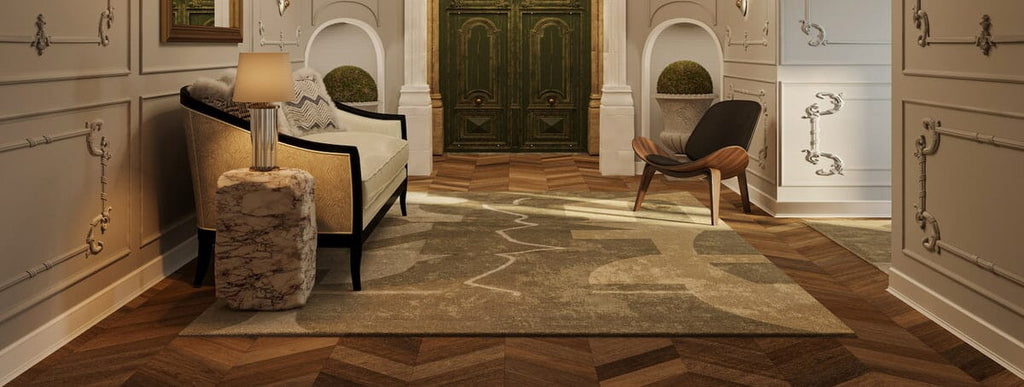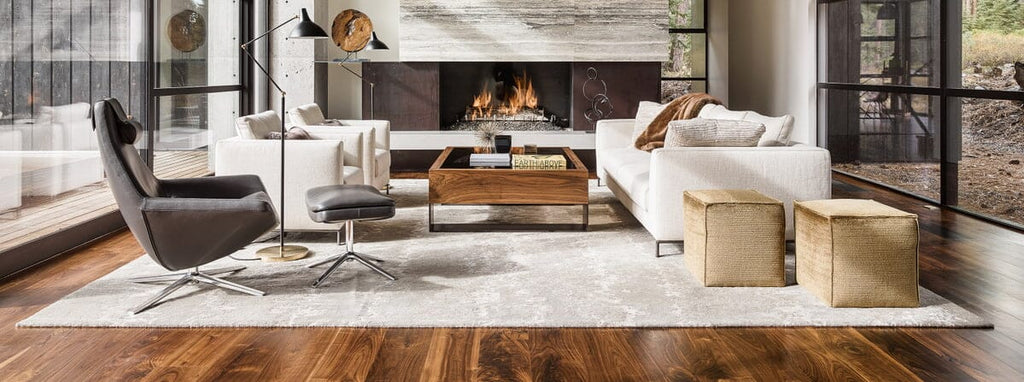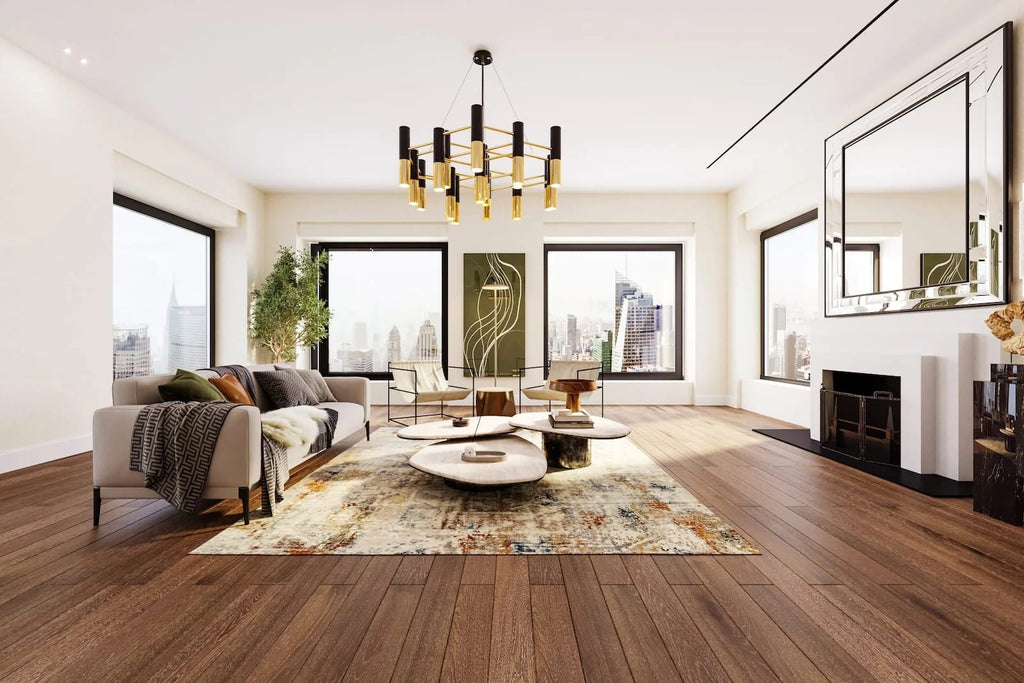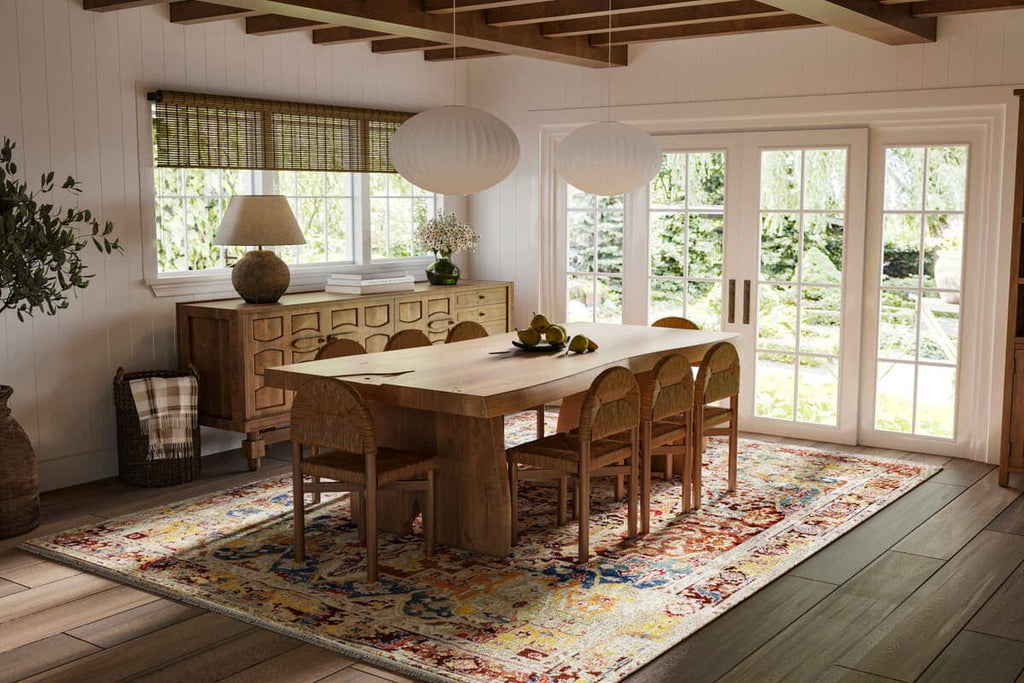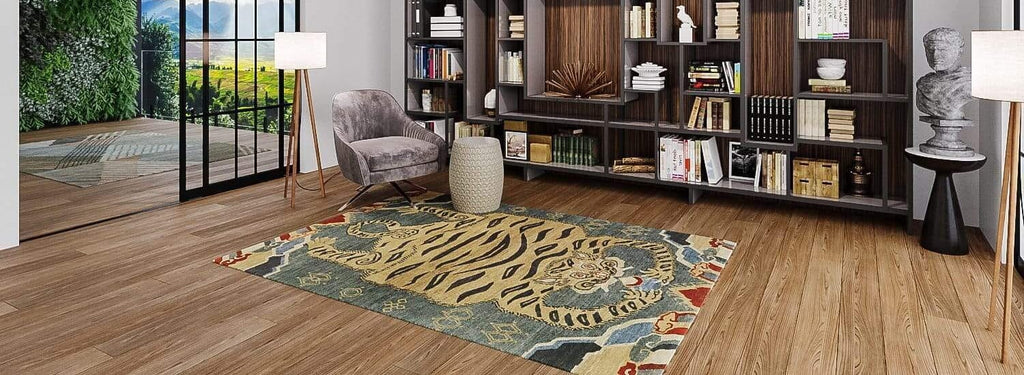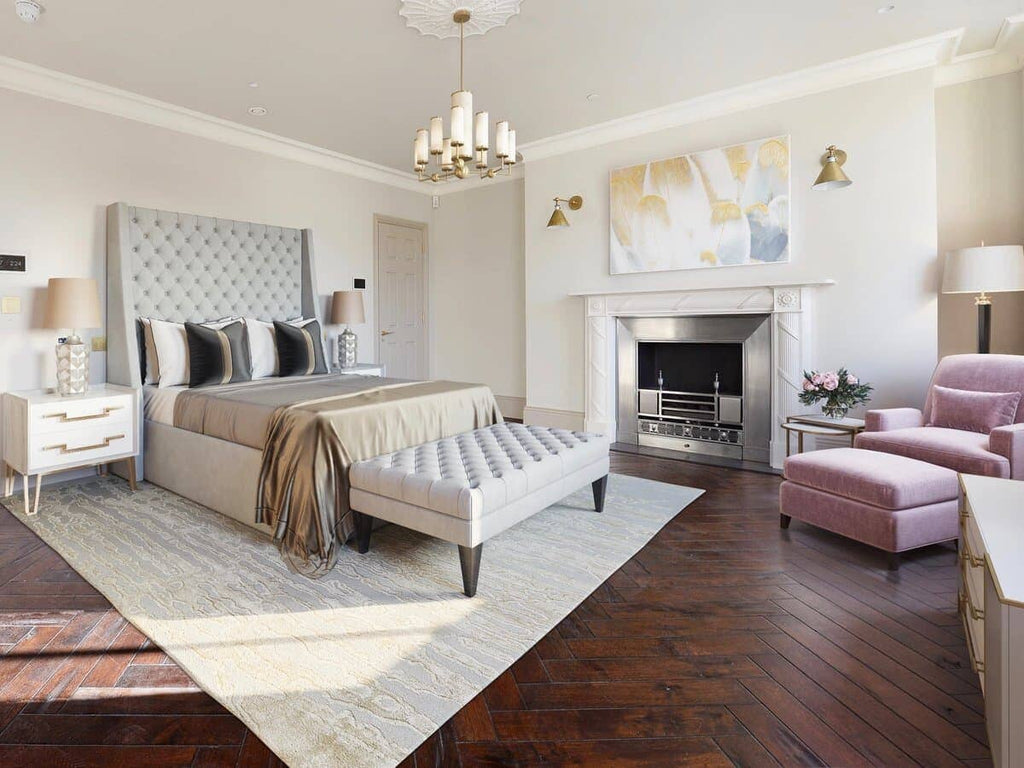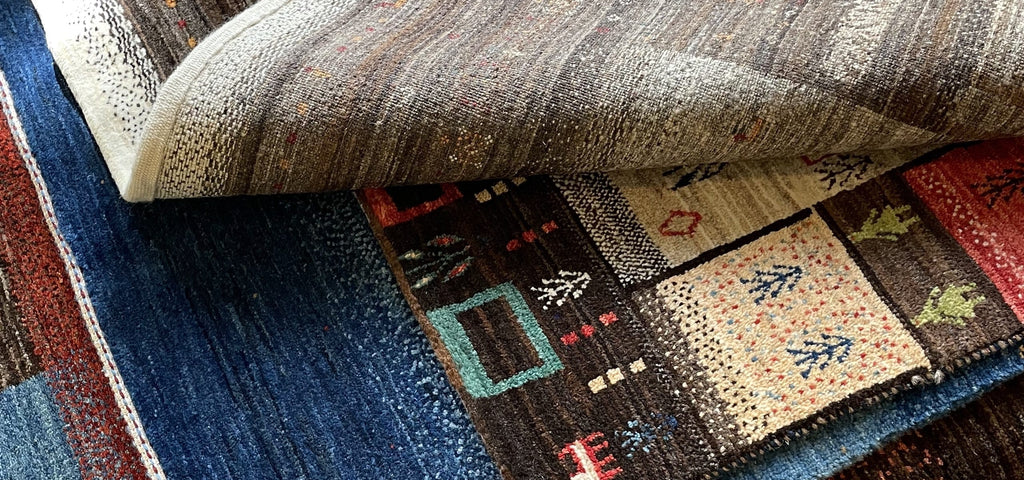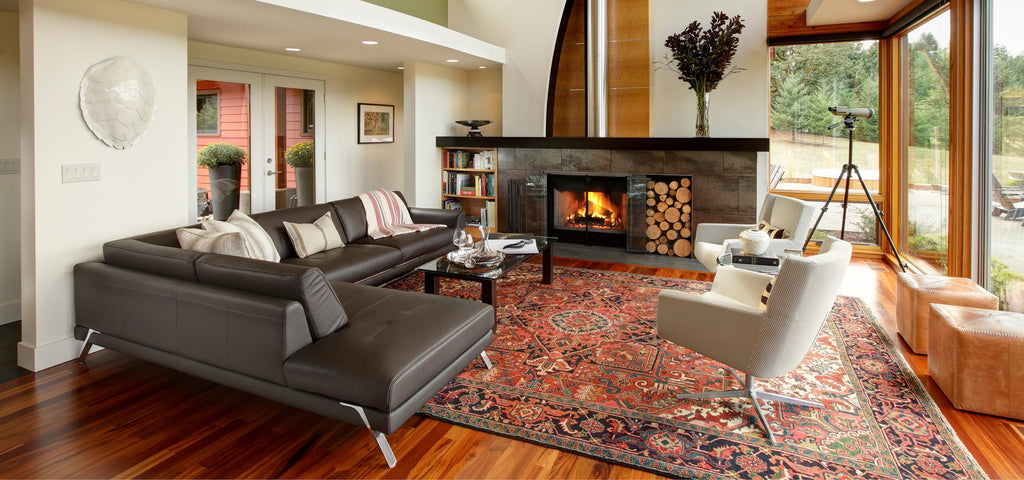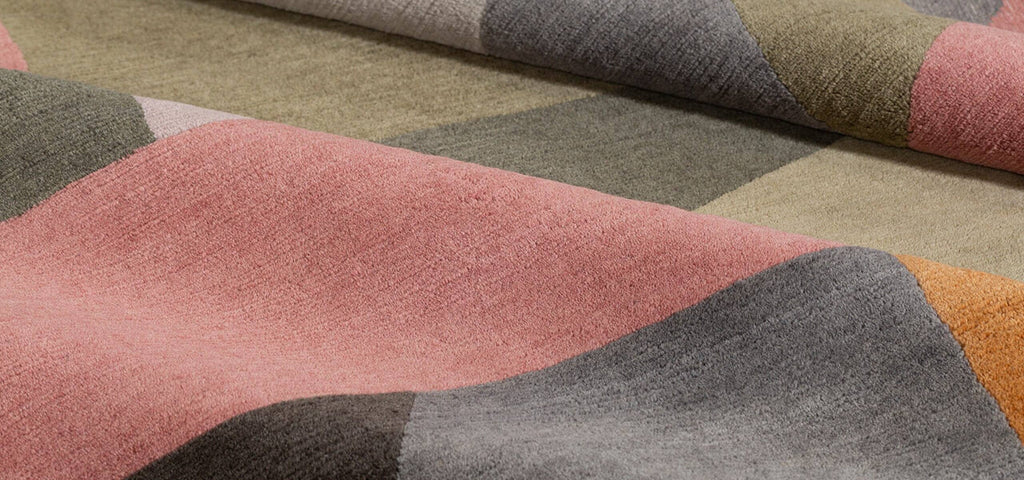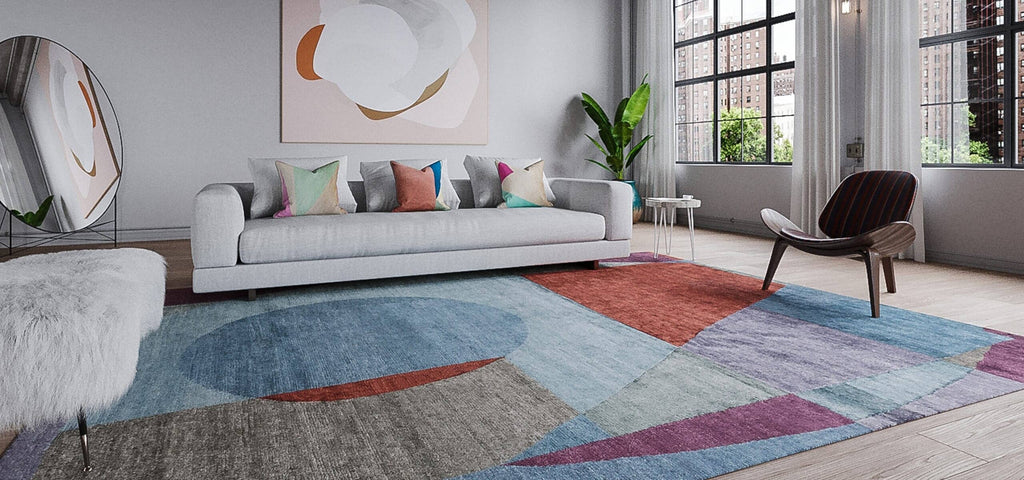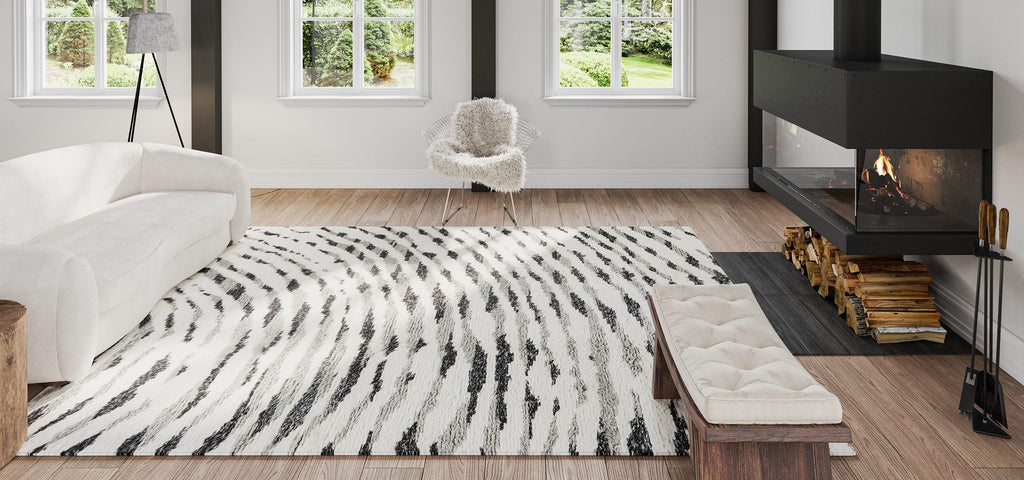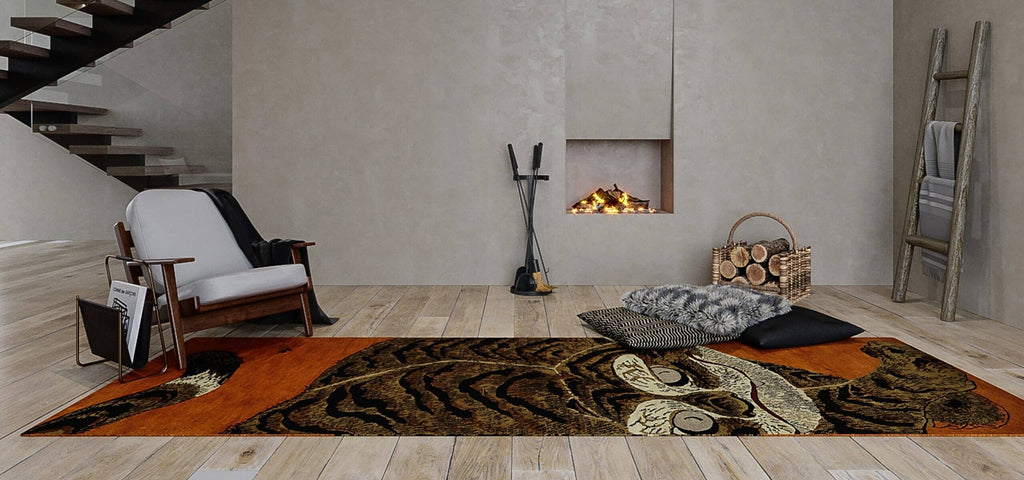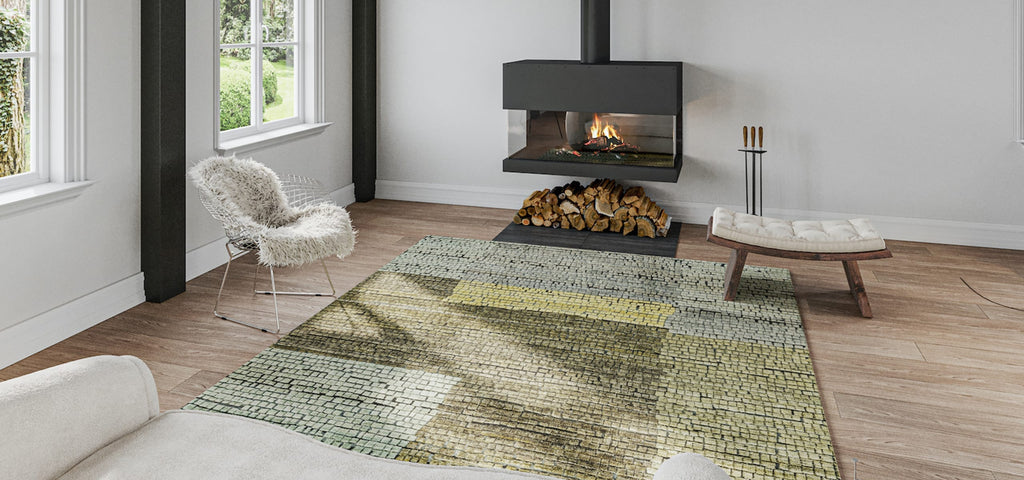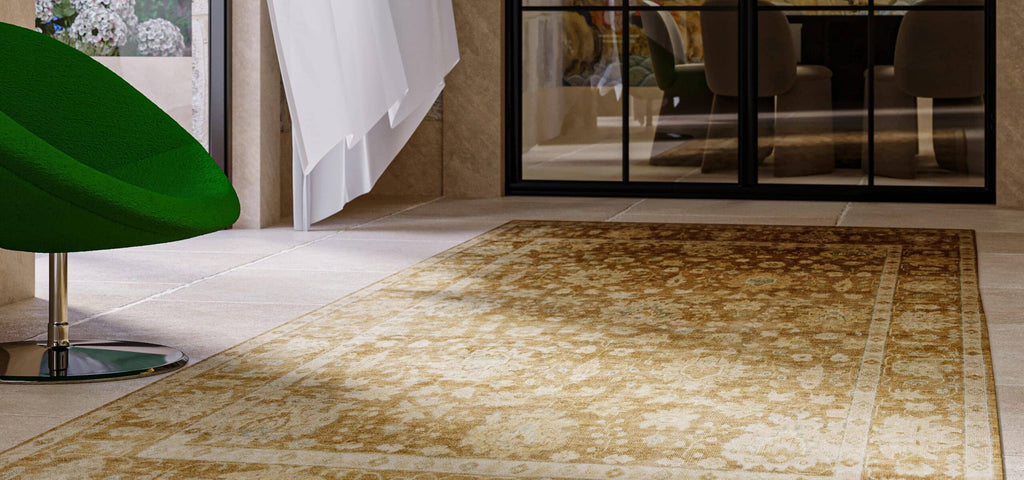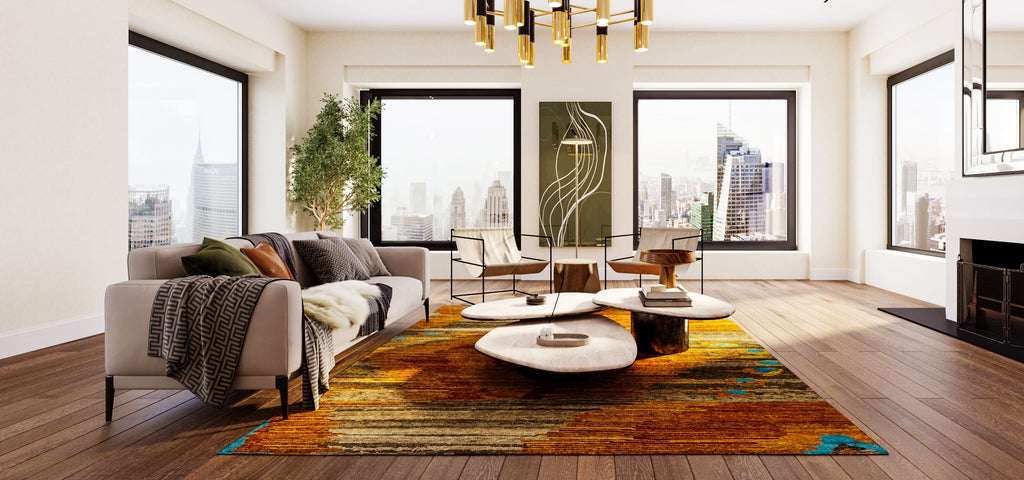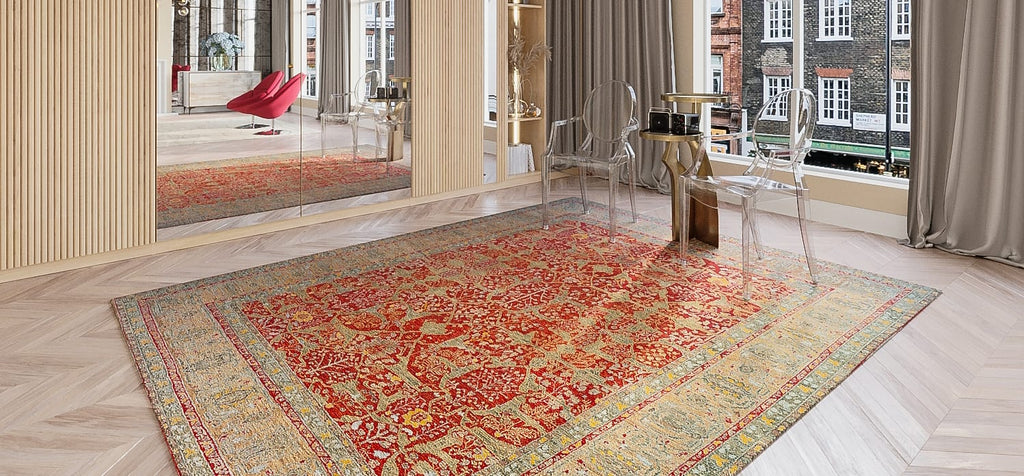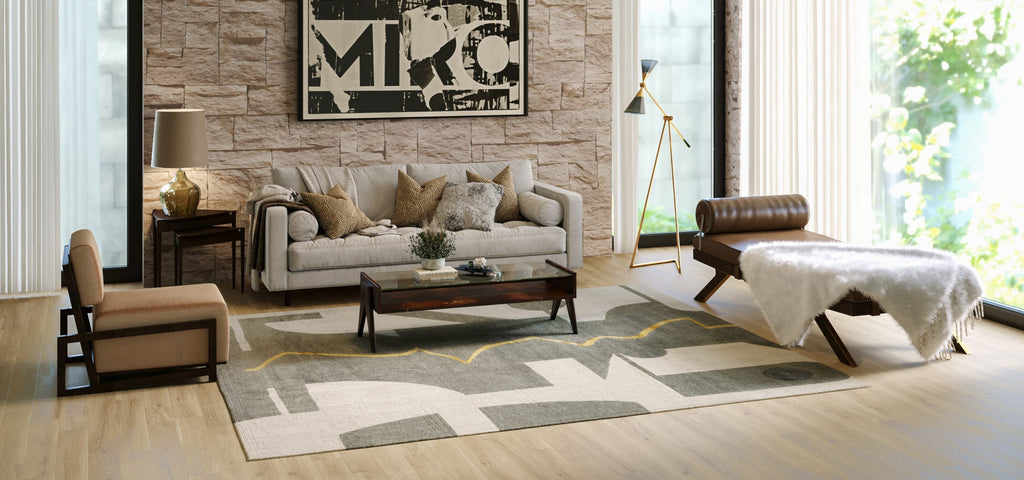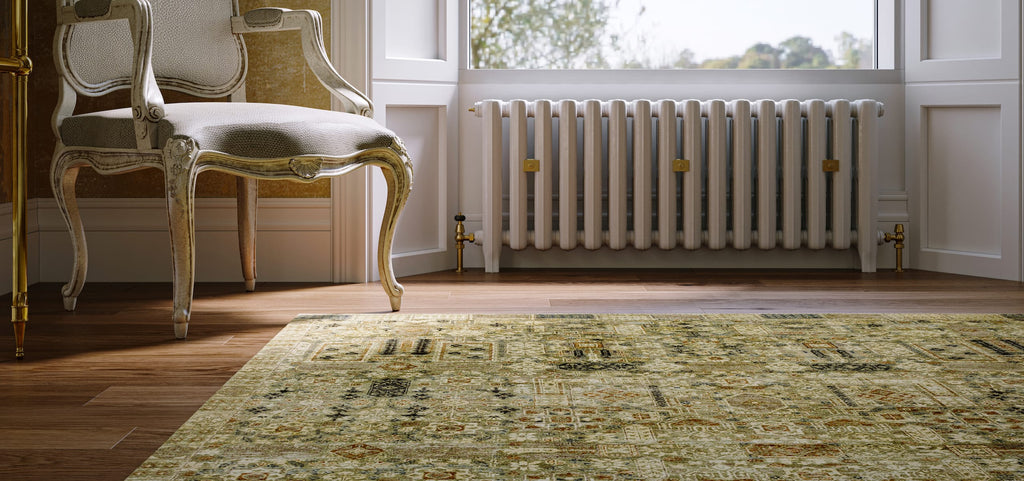As the world becomes increasingly aware of dangerous effects of global warming and the various factors that impact climate change, consumers demand more complete transparency regarding sustainability practices and are choosing to align with brands that share this common cause.
'Increased consumer anxiety over climate change has challenged every brand to rethink their approach to business and best practice. This includes their material choices, the fibers selected to create products, and how these materials are produced.' -Woolmark

Sustainability is absolutely paramount. More and more brands are introducing eco-friendly products as they focus on their carbon footprint and overall waste levels. As we evolve towards a more sustainable future, so should our homes.
So how should we approach a design plan to decorate our homes sustainably? Repurposing, reusing, and choosing renewable and sustainable materials and products are a great way to start.
Bamboo Silk
Bamboo silk is similar to traditional silk in look and feel but is a more sustainable and lower-cost alternative. Traditional silk rugs are delicate and often more expensive than bamboo silk rugs. Made from mulberry silkworms raised in captivity, a traditional silk rug is often considered a luxury. The material has been used for thousands of years.
Bamboo silk is a soft, luxurious fabric. Bamboo silk is made from the cellulose of bamboo, a perennial grass plant that’s treated with a base material to produce a thick paste. The paste is then combined with other ingredients before being extruded and dried to produce the fiber.
Why is Bamboo a Sustainable Material?
- 'Bamboo is the fastest-growing plant on Earth. In fact, the Chinese moso bamboo can grow almost a meter in a single day. Bamboo grows in dense forests where little light reaches the ground and there is strong evolutionary pressure to reach the sunlight as quickly as possible. Bamboo shoots are connected to their parent plant by an underground stem, called a rhizome. This means the shoot doesn’t need any leaves of its own, until it reaches full height. Bamboo also grows with constant diameter. Unlike woody plants, bamboo doesn’t waste energy on growth rings that progressively thicken the stalk. It’s just a single stick, growing straight up.' Source: ScienceFocus
- 'The world bamboo market is growing, led by China and an increasing demand for sustainable products in Europe and the United States. According to the International Network of Bamboo and Rattan (INBAR), an intergovernmental organization registered with the United Nations that promotes the growing of bamboo and rattan for economic and environmental gains, the global bamboo economy is now valued at $60 billion, and is a potential income generator for rural communities. So far 18 African countries with natural bamboo—Benin, Burundi, Cameroon, Eritrea, Ethiopia, Ghana, Liberia, Kenya, Malawi, Madagascar, Mozambique, Nigeria, Rwanda, Senegal, Sierra Leone, Tanzania, Togo, and Uganda—have joined INBAR, which is assisting them with bamboo information, technology transfer, capacity building and policy formulation. Other countries, like Angola, Gabon and Zambia, are expected to join the network. According to INBAR’s director general, Hans Friederich, bamboo can be a strong pillar of Africa’s future green economy. He says it can help reduce poverty and protect the environment, and that it provides a practical and rapid solution for some of the natural resource and poverty challenges facing many African countries today.' Source: AfricanRenewal
- Bamboo has a positive effect on the environment: 'bamboo forests have enormous positive benefits for the environment as this incredibly productive plant efficiently stores carbon. Bamboo absorbs 2x more carbon dioxide than trees, which is why they are known to act as carbon sinks. It also generates a vast amount of oxygen, totaling up to 30% more than most plants and trees. As well as this, bamboo plants have strong roots in the ground which makes the soil more stable. This means it can stabilize and restore the land, and prevent landslides. So in countries which are prone to landslides, bamboo could be a good option. Finally, bamboo helps protect biodiversity and endangered species by creating homes for a variety of different animals. Bamboo forests save and protect the species living in that forest, by providing both homes and food. Don’t forget the giant pandas who rely on bamboo alone!' Source: BareVida
Browse our 100% Bamboo Silk Collection
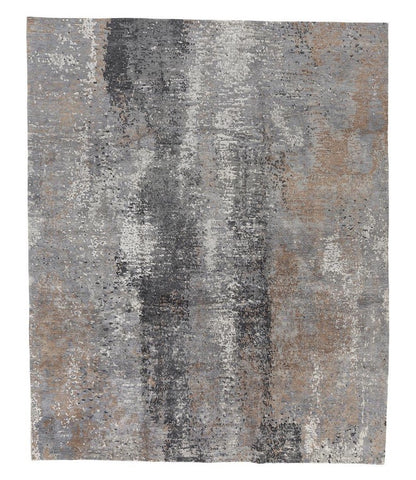
Style and Quality without Compromise
Bamboo silk is a premium type of viscose made from bamboo rather than wood or other materials used to make other types of viscose. Because of its hydrophilic nature, bamboo silk avoids some of the negative performance issues that may result from prolonged use of other types of viscose. Tufenkian bamboo silk carpets receive a special finishing which enhances their performance. We laboratory test our bamboo silk to determine its performance and acceptability for soil retention and wear.
Our Bamboo Silk’s sheen and texture are alluring and allow us to create exceptionally attractive decorative carpets at significantly lower cost than if they were made with real silk. However, they are not made to last for generations or to gracefully endure heavy traffic as are most of our other products.
GOOD TO KNOW: Tufenkian’s Bamboo Silk tests 3.7 out of 5.0 for Stain Resistance (after cleaning). To put this score into perspective, the rating key is 1 being lowest performance and 5 being superior performance with a rating of 3 considered satisfactory; as a comparison, unbleached wool tests 4.6 out of 5.0. When cleaning Bamboo Silk it is best to use a professional, however there are times when a quick response is needed. Gently blot the soiled area, using a clean cloth or paper towel to absorb liquids from spills. Air dry -- heat drying should be avoided. Do not scrub.
Wool
'Wool has long been accepted as an environmentally positive fiber choice with a number of benefits, such as being 100% natural, renewable and biodegradable.' -Woolmark
Wool is also thermo-regulating, nearly fuss-free, and can easily be repaired and renewed for years of use and enjoyment. Known for its soil and stain resistance, long-term appearance retention, color retention, and texture recovery, wool is popular for its practicality and also provides numerous environmental benefits. It is flame-resistant, mildew resistant, and water repellant.
Why is Wool a Sustainable Material?
- Wool is replenishable: 'Wool is a protein that grows from the skin of sheep, goats, and other similar animals. Wool also refers to a textile that is made from the animal's fleece once the wool is shorn, spun, and woven into cloth. Because fleeces regrow every year after shearing, wool is a natural, renewable fiber source, making it one of the most sustainable sources of clothing.' Source: TreeHugger
- Wool is often biodegradable: 'Wool is usually biodegradable. It decomposes readily much like cotton and other plant-based fibers. Worn-out woolen garments can theoretically be buried in the ground, and they will eventually compost.' Source: Good on You For a biodegradable option, be sure the wool is not superwash wool, a plastic-coated option, and choose natural and organic whenever possible.
Style and Quality without Compromise
Wool is by far the safest choice in homes, hotels, offices, and commercial spaces to guard against the danger of fire, as it is the only fiber that naturally resists flaming. Unlike many man-made fibers, which often melt and stick when on fire, wool smolders or chars instead of bursting into flame. Wool normally self-extinguishes when the flame source is removed.
Not only does wool repel water, but it can also hold moisture without mildewing. This is an important quality since mold and mildew are considered one of the most detrimental irritants to the immune system. Wool naturally helps stabilize the relative humidity in buildings by absorbing or releasing moisture.
Tufenkian does not bleach or scour our wool or strip it of its lanolin (a natural soil and stain inhibitor that we covet and preserve by never compromising the basic character of the wool fibers by bleaching or stripping). This allows our rugs to remain inherently soil and stain resistant.
Browse our 100% Wool Rug Collection
Wool is non-allergenic and has been proven hygienically safe in medically sensitive areas. Wool does not promote the growth of dust mites or bacteria, and actually contributes to air purity in buildings by absorbing polluting gasses. Walking safety is also assured by its non-slip and non-abrasive characteristics. As an additional bonus, wool offers superior sound and heat insulation properties.

Repurposing and Reusing
Repurposing is a great way to save money, save the environment, and keep a healthier home without introducing as many synthetics and chemicals. Here are some tips on how to do it well:
Decide on Your Style and Needs: With a well-defined style, it’s easy to trim and release pieces that don’t fit. Donate them or give them new life with a style upgrade. Plus, when seeking new pieces at antique shops and secondhand stores, you’ll have a clear idea of how to sift through the clutter and identify statement pieces that will work into your design.
Or, explore James’ Vault, where you’ll find James Tufenkian’s personal curated collection of antique and vintage finds. These resale items are a great way to bring new life and purpose into an existing piece.
Shop Your Home: search the other rooms in your house for pieces that are forgotten about. Your basement, attic, closet and seasonal storage areas might offer pieces that would work well with a new purpose.
Look for Vintage and Antique Solid Wood Pieces: these pieces are high-quality and very well made. And as an added bonus, there is no new negative footprint placed on the environment.
'Think about how our grandparents used to live and the fantastic furniture they had. Many of those pieces are hanging around today and are still the best quality pieces in our homes. Hang onto and cherish them. Look for tables, chairs, end tables, stools, dressers, bed frames and benches at yard and estate sales, antique markets or in your parents' attic.' -Simple Home, Simple Life
Give New Life to Items You Already Have:mend and repair heirloom and well-loved items. Consider painting, refinishing or adding a decorative accent to an existing piece of furniture. This can breathe new life into your item, plus it helps to birth inspiration and creativity to see something with fresh eyes.
Why We Care
Sustainability is everyone’s responsibility. The future of our children, our habitats, and the earth are at risk, and only by joining together through strategic planning and action can we help preserve our way of life, our precious resources, and the inhabitants of our planet.
How We’re Doing Our Part
Innovating Solutions
The Tufenkian Foundation was launched in 1999 to address the most pressing social, economic, cultural and environmental challenges facing Armenia. For almost two decades, the Foundation has worked to meet this need by modeling new approaches to longstanding challenges -- pioneering projects that generate real change, creating a ripple effect through multiple layers of Armenian society.
Protecting Natural Resources
Since 2002, the Foundation has pursued a combination of hands-on reforestation, community initiatives, and public advocacy campaigns to help Armenians secure a better environment and better environmental policies – a cause that is still at the heart of our work.
Today, our main focus is on improved mining legislation via the Mining Legislation Reform Institute (MLRI), a registered Armenian NGO. We seek to ensure that mining in Armenia is practiced responsibly and provides sufficient benefits to the country and local communities.

